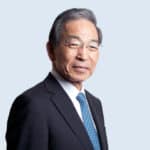The Japanese market faces increased competition and fragmentation.
2023 is the Year of the Rabbit. Kiyota Akira, Group CEO of Japan Exchange Group, which includes the Tokyo Stock Exchange (TSE), said in his New Year’s message that as rabbits hop, he is hopeful that the stock market will make a great leap forward this year.
Whether the market hops or drops is yet to be seen, but market structure in Japan will most definitely advance as it becomes more investor-friendly. Best execution regulations kicked in at the start of this year, there will be a phased in a reduction in the tick size of 400 stocks by spring, and Cboe Global Markets is due to expand its presence in Japan by the end of 2023. All of this should make the market more accessible to international investors.
The best execution regulations are mainly focused on retail investors to increase access to alternative execution venues. In order to make the TSE more attractive to both domestic and international investors, the exchange restructured its stock market into three new market segments – Prime, Standard and Growth – in April 2022.

Akira wrote: “This was just the beginning, and we will continue our efforts to encourage listed companies to achieve sustainable growth and increase their corporate value over the medium-to-long term.”
However, Masatoshi Kikuchi, chief equity strategist at Mizuho, said in a report in December 2022, that since the TSE restructured the market only 10% of companies have satisfied the new listing requirements, with the remaining 549 firms in limbo.
Kikuchi said: “The TSE has still not confirmed any timeline for when these requirements will be enforced or revisited. The focus will be on future announcements on this topic in 2023.”
Increased competition
TSE has a market share of approximately 85% of the overall equity flow in Japan. However, the exchange has faced increased competition since Cboe Global Markets completed its purchase of Chi-X Asia Pacific, an alternative market operator, in June 2021. The acquisition gave the US exchange group an opportunity to enter Japan and Australia, two of the world’s largest securities markets, and establish a significant presence in Asia Pacific for the first time.
Ed Tilly, chairman and chief executive of Cboe Global Markets, said on the group’s full-year results call in February this year that equities market share in Japan grew to 3.6% during 2022, up from 2.7% in the previous year.
At the time of the acquisition Cboe said it would integrate both Chi-X Australia and Japan into its trading and technology platform and subsequently launch BIDS Trading, its block trading ATS, in both countries.
Tilly said: “We remain on track to launch Cboe BIDS Japan in the fourth quarter of this year, further extending our reach of the network into another key global equity market.”
Fragmentation
As fragmentation creates competition that creates complexity, Japan will likely see a sharp uptick in electronic trading offerings.
Tokyo-based Mizuho Financial Group’s Compass trading algorithm has moved quickly to the fore, winning the award for Best in AI at Markets Media Group’s 2022 Markets Choice Awards. It goes beyond machine learning and into deep learning that can help American investors navigate the Japanese equity market by minimizing implementation shortfall against a number of benchmarks.
It uses a concept called clustering, which groups data points based on certain similarities and enables the AI to know from past experience when trading a group of stocks in a certain style is more effective.
Japan has lagged the US and Europe in the case of dark pools, non-primary exchanges, and ATSs. For example, in the US, investors trading equities in their home market are used to a fragmented market structure where the primary stock exchanges – NYSE, Nasdaq, and Cboe – only receive about half of the total trading volume.
High-frequency flow began to become a more prevalent component of the Japanese market following the TSE’s 2010 technological upgrade, known as Arrowhead. Global HFT firms operating in the US were looking for other markets given the saturation, and the Japanese market was attractive according to Mizuho.
 “Japan is emerging as a very interesting place for active traders to explore,” said Sam Clapp, Mizuho Americas Equities. “Due, in part, to some of the regulatory changes, the rising prevalence of electronic trading, and renewed interest from activist investors, Japan cash equities trading on the JPX is up about 23% in the last three years.”
“Japan is emerging as a very interesting place for active traders to explore,” said Sam Clapp, Mizuho Americas Equities. “Due, in part, to some of the regulatory changes, the rising prevalence of electronic trading, and renewed interest from activist investors, Japan cash equities trading on the JPX is up about 23% in the last three years.”
Another TSE upgrade, Arrowhead 4.0, is scheduled by the end of the first half of 2024 in order to maximize trading opportunities, improve user convenience, extend trading hours, enhance market data, and increase system resiliency.
News Release
-Trading Overview in FY2022 & March 2023https://t.co/3zeRDxaHHl— Japan Exchange Group EN (@JPX_official_EN) April 3, 2023
Akira said: “10 years ago, on January 1, 2013, Tokyo Stock Exchange and the former Osaka Securities Exchange merged to form Japan Exchange Group, JPX. As the operator of the core market infrastructure in Japan, JPX will endeavor to run a market that anyone can use with confidence, while also contributing to the development of Japan’s financial and capital markets, the growth of the economy, and the realization of an affluent society.”
